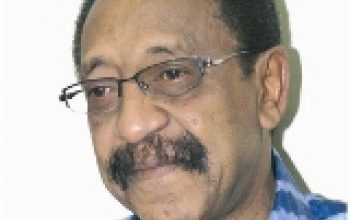The Framework Is Broken Beyond Repair

By: Abdallah Ali Ibrahim
Earlier this week, I published a two-part piece titled “Why Didn’t the War Emerge from the Defective Framework Agreement?” Just two or three days later, Mohamed Hamdan Dagalo (Hemeti), leader of the Rapid Support Forces (RSF), stated that he had warned the relevant parties against the agreement, claiming it was a harbinger of war. I wish we knew precisely why he was so pessimistic about the agreement from the beginning. However, I argued in my piece that the RSF hated the framework agreement even before it came into existence. The reasons were twofold:
It mandated the RSF’s integration into the armed forces.
It prohibited it, as a regular force, from engaging in business ventures.
Even when the RSF was officially born through the 2017 law, Hemeti ensured that the force would remain independent from the army, as discussed in my article. Moreover, he constantly reiterated that the RSF was not an armed group that would simply merge with the army after its “rebellion” against the state was over. In Hemeti’s view, the RSF was a parallel army, whether people liked it or not.
Based on this, I argued that the RSF would be the biggest loser if the framework agreement were implemented. It would strip Hemeti of both his manpower and wealth, leaving him with nothing. It seemed that when Hemeti warned them that the framework was a dangerous path to take, he knew that he had nothing to lose in a war—only his chains. And so, the war began.
Has Hemeti Gained from the War?
Yes.
If you read the document Hemeti signed with the Coordination of Civil Democratic Forces (TAQADDUM) in Addis Ababa (January 2024), you’ll find that it aligns perfectly, in terms of military and security reforms, with the RSF’s own “Vision on Ending the War and Establishing the Sudanese State.” Both call for the creation of a new, professional, and national army that excludes the integration of any forces—whether the RSF or armed movements—into the existing military.
The Addis Ababa agreement states in its second article:
“The security sector is a vital part of a modern state. Comprehensive programs must be implemented to rebuild and restructure the security sector following internationally agreed standards. These programs must positively engage with existing institutions and lead to the creation of a unified, professional national army representing all Sudanese, based on population distribution. This army will be subordinate to civilian authority and aware of its constitutional duties, ending the phenomenon of multiple armed forces (the military, RSF, armed movements, and militias) outside the framework of a professional national army. Furthermore, the agreement ensures the security institutions (the military, RSF, police, and intelligence) withdraw from political and economic activities, accept the principles outlined above, and pledge to support the democratic transition, stabilizing the democratic system, and rebuilding the war-torn nation. The institutions will also provide necessary guarantees to form a government that completes the tasks of transition, constitutional and political establishment, and administrative, financial, and economic reform.”
(The emphasis is mine.)
The RSF’s “Vision” was much more concise:
“Acknowledging the need to establish a new Sudanese army out of the current multiple forces to build a single, professional national military institution, free from politics, and reflective of Sudan’s diversity in both leadership and rank, based on population weight.”
Both texts treat the armed factions equally, referring to them as “multiple armies” (Addis Ababa Declaration) or “current multiple forces” (RSF’s Vision), which must dissolve into a single, professional national army.
A Successful Deal for Hemeti
The demand for the RSF’s integration into the military has effectively evaporated. In the end, the army itself has become just one among many “multiple forces



